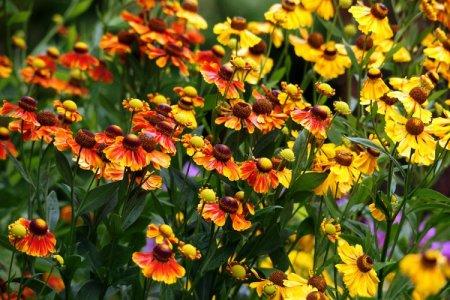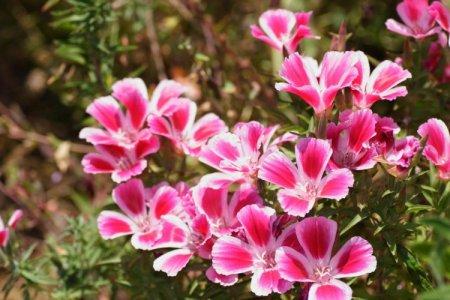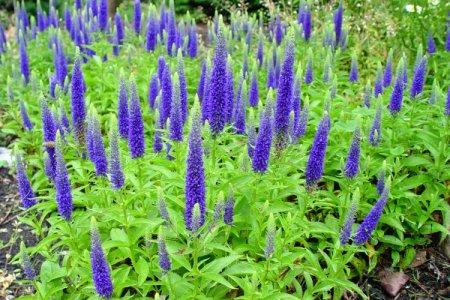
Pushkinia is often confused with a miniature hyacinth, and at first glance they really look alike. Therefore, we decided to talk about her in more detail in order to find out how she still differs and how to take care of her!
general information
Pushkinia has nothing to do with the outstanding poet. It was named after Musin-Pushkin, the discoverer of this plant on Ararat. It is there and in the mountains of the Caucasus that Pushkin is most often found.
The tiny fragile flower is actually a persistent perennial that blooms in the front row in spring. The height of the shoots does not exceed 15-20 cm, and they are surrounded by several lanceolate leaves. The small, scaly bulb resembles an egg. The white or blue flowers look like bells of 5-6 petals.

Types of Pushkin
In the gardens of Russia, only three main types of Pushkinia are grown, and it is on them that we will dwell in more detail today. They are hyacinthous, proleskidny and alba.
Hyacinth Pushkinia
A small neat flower grows only 15 cm in height. The buds are snow-white or blue, with a strip in the center of the petal. The linear leaves look very succulent and fleshy.

Pogo-shaped Pushkinia
This species is slightly larger - up to 20 cm in height. She has bright and elongated narrow leaves that appear immediately with peduncles or a little later. The flowers are mostly pale blue.

Pushkinia Alba
A snow-white variety of decorative Pushkinia with flowers that are very large for this species. Alba is quite rare here, but the more interesting it looks.

Pushkin care
She is not afraid of cold weather, precipitation and adverse conditions in general. But it must be weeded out, loosened the soil around and in time to remove wilted buds to prolong flowering.
Temperature and lighting
In the garden, Pushkinia prefers light partial shade and feels great under trees and shrubs. But even in the sun, she feels good, because in the spring there are still no such aggressive scorching rays. In addition, it is a frost-resistant flower that winters calmly in the open field.

Watering
Additional watering is needed only in dry spring after a snowless winter. Pushkinia consumes most of the moisture during the growth of leaves. The water should be well-separated and warm.

The soil
We advise you to choose a site on a hill for the natural convergence of melt water. The soil should be nutritious and loose, with good drainage and compost. Areas with a close groundwater table are not suitable.

Fertilizers and feeding
Fertilizers are applied only once at the very beginning of spring, without waiting for the snow to melt. Granular nitrophoska is well suited. If the soil is too poor, planting a weak mullein solution a little later in the fields.

Weeding
Remove weeds regularly, because the pusher near them quickly loses its decorative effect. To prevent the problem, you can cover the soil around it. And do not forget to carefully loosen the soil so as not to hurt the bulb.

Wintering
By the end of autumn, fill the area with bulbs with peat or humus by at least a few centimeters. In the spring, this shelter will become a natural top dressing, so it doesn't even need to be cleaned.

Planting and breeding Pushkinia
Seed reproduction is a long process, because specific preparation is needed, and the plant will bloom in a couple of years. Therefore, we advise you to get the bulbs and, if you wish, drive them out in flowerpots in November. Plant them in loose soil, put them in a dark, cool place for 2-3 months, and then transfer them to the light with warmth and start watering.
Pushkinia can be propagated with bulbs. For several years, they become overgrown with a large number of children, which still need to be periodically separated so that the plant grows normally.Separate them immediately after the leaves wilted, save them in sawdust until autumn, and then select the best ones and plant them over the site.

Pest and disease control
The main rule of a healthy planting is timely harvesting of wilted buds and yellow leaves. Otherwise, Pushkinia suffers from a typical set of bulbous plant problems. This is powdery mildew and different types of rot.
When watering, make sure that the water does not stagnate, avoid getting it on the leaf plates and use fungicides for prophylaxis. It is better to destroy diseased plants so that the disease does not spread.
Of the insects, the most dangerous enemy of Pushkinia is the bulb mite, which hides underground in the bulb itself. Therefore, always carefully sort and disinfect the planting material.

Pushkinia - photo
Ornamental Pushkinia is a marvelous find for alpine slides, curbs and rocky areas. It goes well with other perennials and decorates tree trunks.


























